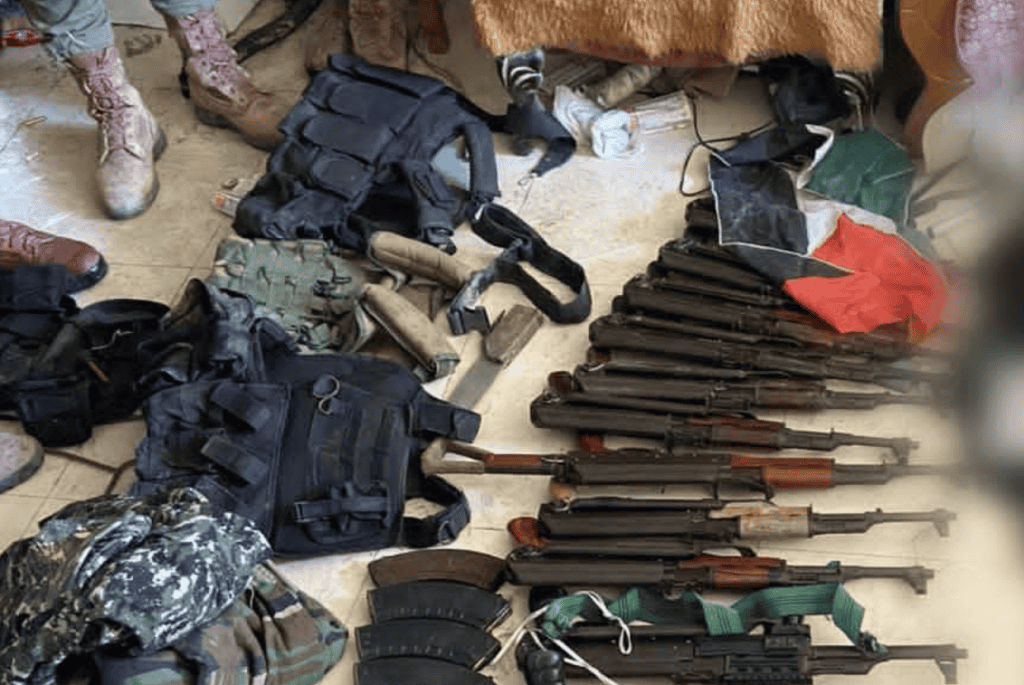
Israeli Defense Minister Yoav Gallant called on Israeli Prime Minister Benjamin Netanyahu to come up with a decision about the future of Gaza. He said in a statement on May 15 that the prime minister should “make a decision and declare that Israel will not establish civilian control over the Gaza strip, that Israel will not establish military governance in the Gaza strip, and that a governing alternative to Hamas in the Gaza strip will be raised immediately.”
Gallant described a seven-month campaign in Gaza that was “bearing results,” he said. “Hamas no longer functions as a military organization – most of its battalions have been dismantled, and it has turned to terrorist warfare, conducted by individuals and small squads. The IDF is operating in Rafah in order to dismantle Hamas’ remaining battalions, to locate the hostages, eliminate terrorists, and block [Hamas’] smuggling routes.” Gallant is aware of the fact that Hamas has returned to many areas in Gaza over the last several months. This is because the IDF’s tactic in Gaza has been to clear areas and then leave.
Gallant noted in his statement that “as long as Hamas retains control over civilian life in Gaza, it may rebuild and strengthen thus requiring the IDF to return and fight in areas where it has already operated.” He noted that once Hamas capabilities are dismantled in Gaza that the power vacuum will need to result in the establishment of a “governing alternative” in Gaza. “In the absence of such an alternative, only two negative options remain: Hamas’ rule in Gaza, or Israeli military rule in Gaza,” the defense minister said.
He noted that the issue of what comes next in Gaza has not been decided. “Indecision, is in essence, a decision – this leads to a dangerous course, which promotes the idea of Israeli military and civilian governance in Gaza. This is a negative and dangerous option for the State of Israel strategically, militarily, and from a security standpoint.” Gallant believes that indecision in Gaza is eroding Israel’s military achievements. He has spoken in the past about the need for a “day after” plan. Previous discussion of a plan, such as creating some kind of pilot program of bubbles in Gaza where a non-Hamas local authority would be in charge, has not panned out. Gallant has often tried to be at the forefront of bringing up these initiatives. In addition, the defense minister has worked since early March to open new crossings to northern Gaza. This was supposed to address concerns about the humanitarian situation in and reduce the chaos surrounding aid that reached a boiling point in February.
Gallant’s statement on May 15 also addressed the multi-front challenges faced by Israel. With a limited set of resources to face all threats, Gallant noted that unless a plan can be created for Gaza, “military rule in Gaza would become the main security and military effort of the State of Israel over the coming years, at the expense of other arenas. The price paid would be bloodshed and victims, as well as a heavy economic price.”
The multi-front challenges Israel faces were on full display on May 15, prior to the minister’s comments. Hezbollah launched more than 60 projectiles at northern Israel, targeting Mount Meron where there is an IDF base. Hezbollah also claimed to down an Israeli “spy” balloon according to the pro-Iranian Al-Mayadeen media. The Iranian-backed Lebanese group also met with a Hamas delegation, according to pro-Iran media, illustrating the coordination sought by Hamas and Hezbollah.
In addition, the IDF continued to face challenges fighting in Rafah in southern Gaza and Jabalya in northern Gaza. In Zaytun, a neighborhood near Gaza City that the IDF has now operated in three times since beginning its offensive in late October, IDF troops wrapped up one week of operations. They had swept the neighborhood again and eliminated terrorists. However, the fact the neighborhood had to be swept by forces in November 2023, February 2024 and again in May 2024 shows how quickly Hamas has been able to return. “The soldiers eliminated dozens of terrorists in encounters and airstrikes, destroyed terrorist infrastructure and located many weapons, including dozens of AK-47s, grenades, magazines and intelligence management assets of the Hamas terrorist organization,” the IDF said on May 15. Iraqi militias aligned with Iran also launched drones targeting Israel on the evening of May 14 and early morning of May 15. Two of them were intercepted by Israeli warplanes. Taken as a group, the threats from Hezbollah, Iraq and the continued battles in Gaza brought to life the multi-front challenges that Gallant referenced.







